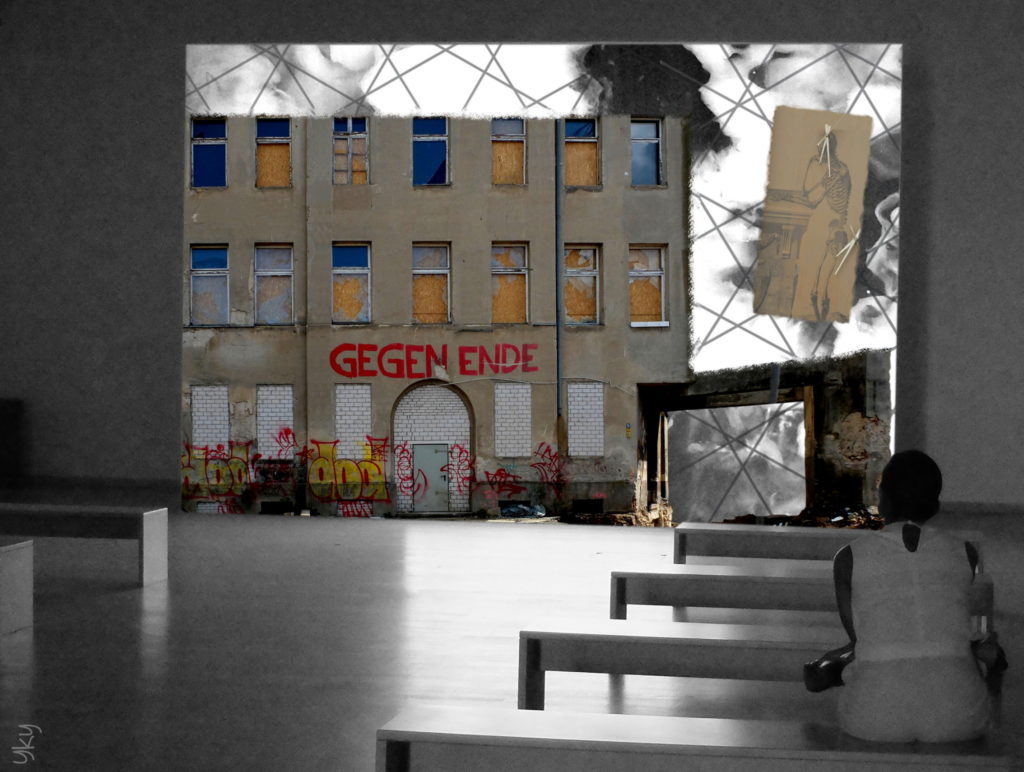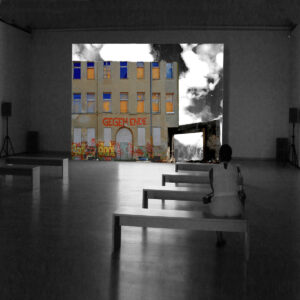By nature, urban resilience leads to ephemerality. What has been built should possibly be undone as no one can predict what our future will be. Such principle is intelligently reflected in the guidelines of the Historic Buildings and Monuments Commission for England, in charge of the sustainable management of historic environment, page 46, “In reality, our ability to judge the long-term impact of changes on the significance of a place is limited. Interventions may not perform as expected. As perceptions of significance evolve, future generations may not consider their effect on heritage values positive. It is therefore desirable that changes (…) are capable of being reversed, in order not unduly to prejudice options for the future.” (1)
In our architectural environment, urban planning implementation (2) and brownfield sites development may both contribute to a better understanding of the ephemeral dimension to which the urban resilience concept refers.
In her research paper on the role of transitional uses (3), K.J. Hickey, presents three case studies exploring the programs of Melbourne, Amsterdam and Hamburg and how new and innovative ideas, though ephemeral, could provide solutions to area’s development. But more specifically, brownfield sites, seen as a matrix for temporary developments, deserve some attention. As recalled by L. Andres (4), their presence reflects a heterogeneous time scale during which conflicts of interests interfere with the initial urban master plan. But in the same time, they create the required conditions for their emergence and development.
However, as underlined by M. Ferreri (5), shifting away from planning institutions does not remove the legitimacy of brownfields when conveying innovation and creativity. Their celebration comes as a direct address and encouragement to architects, planners, policy makers to learn from artistic and socially-engaged practices and projects. Paradoxically, what is ephemeral will turn out to become an inflection point which allows a better hazard management embodying thus the means proposed to improve resilience. Thereby, the time-scale inconsistency will contribute to the urban space consistency.
The awareness of the limitation in duration and its acceptance in the urban planning process reflects a major change of paradigm. Beyond the flexibility and the ability to reconsider what could be seen as granted, accepting ephemerality will change our value scale. What is ephemeral enhances what is worth, objecting the idea of a duration “aiming at truth”. Thus, by splitting the notions of “value” and “truth”, ephemerality and duration appear to be mutually reinforcing as both of them show the way of “what needs to be done”. Again, ephemerality should not be limited to its status acknowledgment. It should be understood as the ability to incorporate an apparent paradox: to propose new impulses acknowledging the fact that their outcomes are not aimed to last.
Ephemeral experimentations may act as a sustainable transition during a period of uncertainty contributing to reach the desired level of resilience. But as an urban citizen, challenging experts to make sure that my environment will be resilient, I see no reason to limit temporary urbanism to periods of economic austerity (6). Though including such experimentations in urban blue prints could be a source of conflicts, as shown by S. Jacquot/ M. Morelle (7) in the case of immigrants living in temporary residences, the funding principle of urban resilience remains unchanged: enabling to integrate the occurrence of hazards without compromising the urban planning developments. And this with only one objective: the well-being and well-living of people together.
The below work can be seen as a counter-example questioning the practicability of ephemeral urbanism and its integration within the urban planning process. This picture taken in Berlin says a lot. We can guess that the building was a place of life as suggested by the graffiti on the façade. But obviously, inhabitants were not welcome as shown by the windows and door obstruction and the “GEGEN ENDE”, presumably painted by inhabitants themselves. The correct translation which is “towards the end” (the irony is that “gegen” on its own means “against”), sounds like an absolute failure. Failing to include the social expectations of a community in the urban frame. Failing to reconsider that owning a property could possibly show the way to a new paradigm: I own, therefore I can.

More on the above photographic work can be found here
(1) https://www.historicengland.org.uk/
(2) https://www.resi-city.com/2018/04/15/is-urban-planning-the-right-tool-to-improve-urban-resilience/
(3) https://ecologicaldesignlab.ca/site/uploads/2018/02/Hickey-Kathryn-1.pdf
(4) https://www.cairn.info/revue-espaces-et-societes-2008-3-page-37.html
(5) http://www.ephemerajournal.org/sites/default/files/pdfs/issue/17-4ephemera-nov17.pdf Mara Ferreri P. 182
(6) http://eprints.lse.ac.uk/51107/
(7) quoting S. Garcia, http://www.revue-urbanites.fr/informalite-migrations-et-urbanisme-temporaire/
